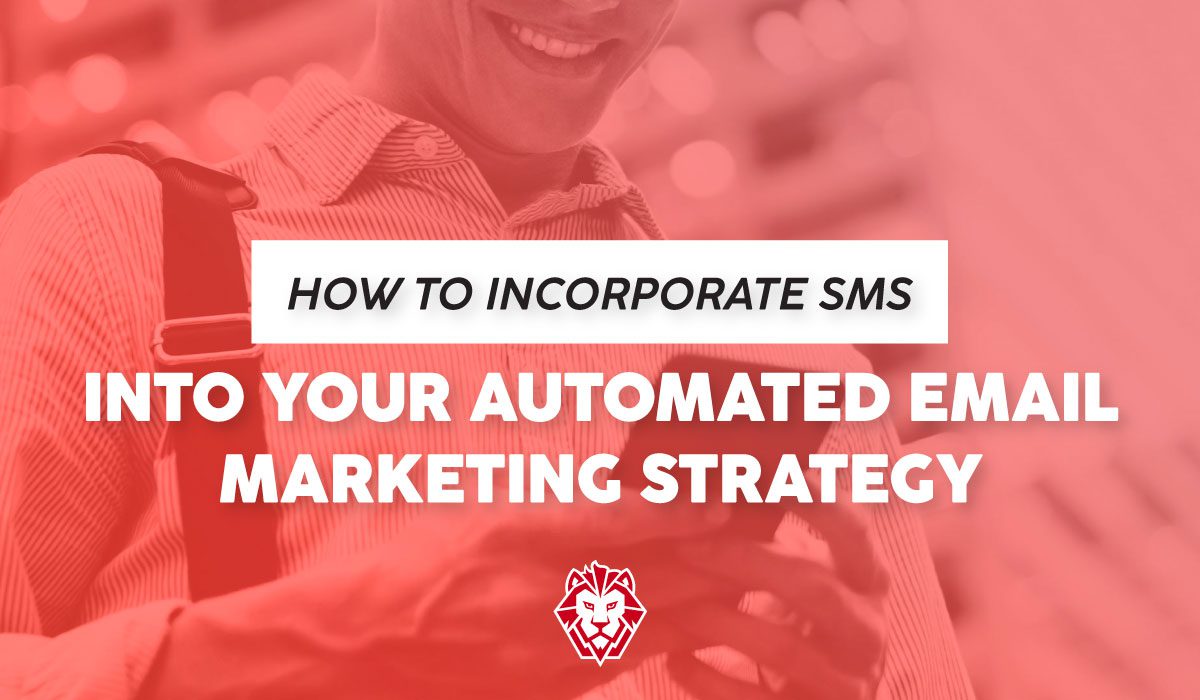The retention marketing industry is constantly changing. New innovations are constantly shaking up the landscape, major tech companies are always changing how they allow marketers to interact with users, and legislatures around the world are updating laws in an effort to keep up.
It wasn’t that long ago that desktop was the most used platform for online browsing and shopping, but now the majority of traffic is coming from mobile devices. And while email has been the dominant form of retention marketing for more than a decade—providing some of the best ROI’s in the entire industry—SMS marketing has been rapidly growing since the turn of the decade.
While we’re still in the early stages of SMS marketing growth, marketing leaders need to start implementing SMS into their overall marketing strategy. Companies that are proactive and start ironing out the kinks now are certainly going to see better results than their laggard competitors.
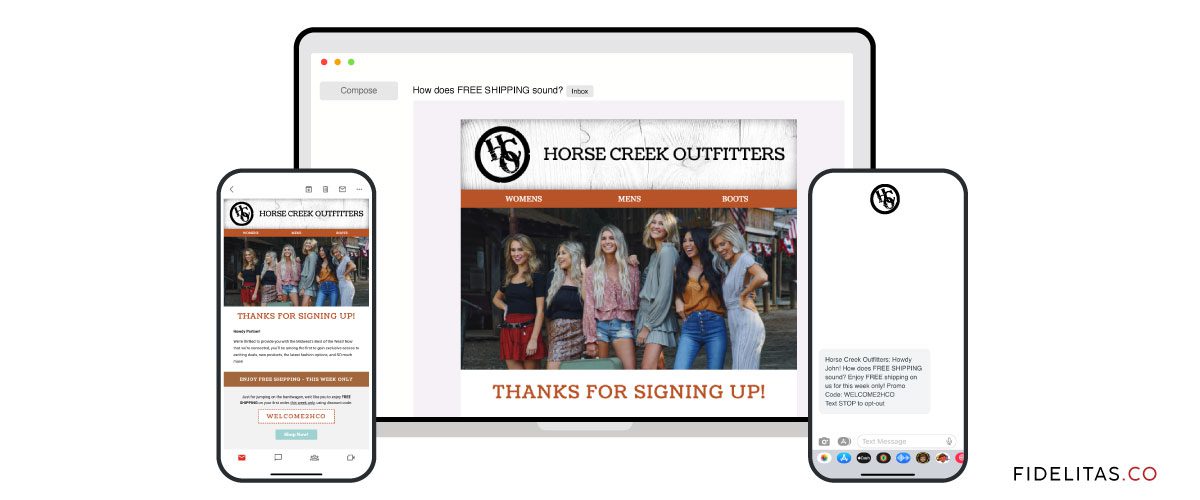
Keep It Aligned With Your Email Strategy
SMS is still a relatively new aspect of retention marketing, but you don’t need to reinvent the wheel to be effective. Think of text message marketing as an extension of your email marketing strategy.
Welcome Flows
This should come as a no-brainer. After someone has opted-in to your marketing funnel, make sure you send them a text welcoming them to your list in the same way you would for an email marketing subscriber.
This is where you should send out any offer you promised to incentivize them to sign-up in the first place. Whether that’s a 10% off coupon or a free gift with a purchase, you need to materialize that incentive immediately.
Remember, this is your first direct point of contact with this customer, and the impression you set during the welcome flow will be a determining factor in whether or not to unsubscribe.
Post-Purchase Flows
Post-purchase flows are another basic SMS flow that you should implement off the bat. According to the recent consumer sentiment report from Klaviyo,
the top three SMS messages that customers want to receive more often are order confirmations, shipment confirmations, and delivery confirmations. Normally post-purchase flows are part of your email marketing strategy, but if you have a customer’s phone number then you should start sending them via SMS too.
Post-purchase flows also open the door for more personalized SMS marketing. Once a customer has made an order, you can use a post-purchase flow to send customers exclusive offers on products similar to those they’ve already purchased.
Winback Flows
If a customer hasn’t made a purchase within the last three to six months, it’s time to enter them into a win-back flow. Again personalization is key here. If a customer has made several purchases, you can use that data to personalize the offer you’re sending them.
Generally, a winback flow includes an exclusive offer to entice the recipient to make another purchase. But what that looks like is entirely up to you.

Best Practices
While many guides are going to tell you to implement the exact same strategies and tactics that you use for email marketing, we’re going to provide an alternative position. The mediums aren’t the same, and neither are their respective best practices.
Make Your Message Timely (don’t send too often)
In email marketing, you can get away with being more aggressive and using a wide range of automations. That simply won’t fly in the SMS marketing sphere. And when you take a second to think about it, it should make sense that people don’t want their notification center to be constantly bombarded with SMS marketing.
Customers trusted you with their data, but if you try to take advantage of that by spamming them with messages, they’re going to unsubscribe or report you as spam. You need to be strategic with your SMS marketing.
Don’t Over-Do Automations
Automations are all the rage, but there are a lot of automations that we use in email marketing that customers don’t want to receive via SMS.
Klaviyo’s report found that nearly half of consumers wanted fewer SMS marketing texts pertaining to their abandoned carts, and 36% wanted fewer texts triggered to their actions.
So it seems like some of the mainstay automations from the email marketing industry might need to be put on the back burner until customers become more open to receiving SMS marketing messages. Trying to shoehorn those unwanted automations into your strategy might be more of a hindrance than a help.
Personalized Marketing Is Key
If your SMS list is small, sending out general marketing material makes sense. But once your list starts growing and you have some customer data, you need to start segmenting your lists and personalizing your messages. This is the same principle you should already have implemented into your email marketing strategy.
And no, we aren’t talking about addressing a person by name. That’s about as cursory as your personalization can get. The personalization we’re discussing is all about using the data you have at your disposal to feed recipients with SMS marketing messages that they’re more likely to respond to.
For example, imagine you run a business that sells a wide variety of candles—from basic candles you’d find at a home goods store to unique themed candles. If a customer buys a set of candles themed around Harry Potter, it wouldn’t make any sense to market a standard “vanilla” or “lilac” scented candle to them in the future. Instead, you might send them product recommendations for candles themed around similar fantasy franchises that they’re also likely to enjoy.
You want to make your email marketing as relevant as possible to each individual consumer. So send them messaging based on products from their past purchases, abandoned carts, or browse history. But keep in mind what we mentioned earlier, that doesn’t necessarily mean shoehorning those automations into your email marketing strategy.
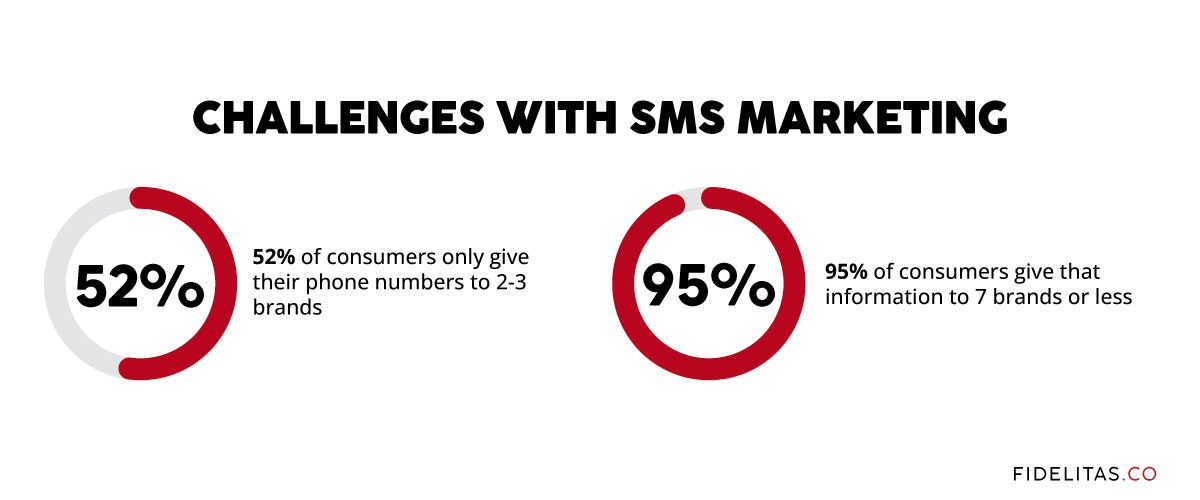
Challenges With SMS Marketing
Although SMS marketing is becoming increasingly popular among brands, there are several challenges that companies will need to grapple with. While it’s easy to see SMS as an extension of your existing retention strategy, it’s not quite a one-to-one comparison even though they rely on many of the same best practices and strategies.
The way we see it, two major challenges will need to be considered by any brand looking to implement SMS into their email marketing strategy. The first is the level of apprehension that consumers have towards SMS marketing, and the second challenge comes from the bane of marketers: Apple.
Customer Apprehension
Text messaging is a very intimate form of communication, and consumers aren’t running around giving out their phone numbers to every brand that asks. According to a recent consumer sentiment report from Klaviyo,
52% of consumers only give their phone numbers to 2-3 brands and 95% of consumers give that information to 7 brands or less.
By and large, it seems like the majority of consumers aren’t as eager to hand over their phone numbers as they are their email addresses. And honestly, who can blame them? Even marketers understand the frustration that can arise from getting too many emails from brands. The last thing we would want is for a barrage of marketing messages to drown out texts from the people we know and care about. So keep that in mind as you’re building out your email marketing strategy.
This leads us to the bigger challenge that brands will have to face.
Apple: The Bane of Marketers
Apple has been building up a reputation for being somewhat of a boogeyman in the marketing industry. The company has taken a strong consumer-first stance in recent years. And while consumers have been happy with the enhanced privacy changes, the same cannot be said for many marketers. The infamous
iOS 15 update forced marketers to stop using vanity KPIs in their email marketing reports and start focusing on marketing engagement—which is honestly a better standard of practice anyway.
But amid the frenzy to add to their email marketing strategy, marketers turned to SMS. Apple promptly responded by releasing iOS16. With iOS 16, Apple gave iPhone users more control over their text messages, and it will probably cause marketers some headaches down the road.
First and foremost, Apple put the report junk button at the bottom of any text thread from a number that isn’t in the user’s contact list. This might end up encouraging users to report your SMS as spam and block your number rather than simply unsubscribing.
Apple also implemented a texting filter in iOS 16 that is reminiscent of the promotional and social tabs in the Gmail suite. Right now, the only options are filtering texts into “known” and “unknown” senders. However,
Apple is testing a feature in Brazil and India that allows users to filter messages into “transactional” and “promotional” tabs. This would lower the chances that your messages get seen as most users are likely staying in the “known senders” tab. Meaning the SMS segment of your email marketing will be out of sight and out of mind.
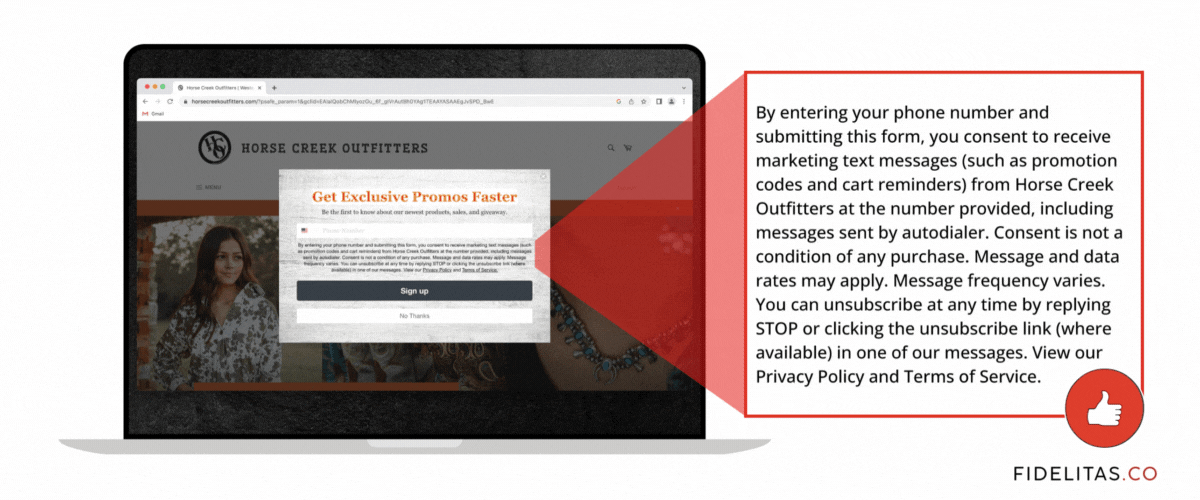
Keeping Your SMS Practices Compliant
None of us like spam, and there are legal protections in place to protect consumers from company spam. For a full overview of US SMS laws, be sure to go over the
TCPA guidelines and go over your texting policies and plan with your attorney. This list is by no means comprehensive; it simply goes over some of the more obvious components of SMS and email marketing compliance.
Disclaim: The following is not legal advice and is for informational purposes only. For complete guidance on this issue, you should consult with your legal counsel. Do not use this guide as a replacement for proper legal counsel.
Gain Consent
When consumers sign up for your SMS marketing list, they should know exactly what they will be signing up for. Whether you plan on sending order updates, promotional material, or some other form of messaging, users need to be informed and expressly agree to receive such messaging. The call to action needs to be crystal clear. And if you aren’t gaining consent before sending SMS, you’re going to be on the hook for some serious fines.
As an extra step. After they sign up for your SMS marketing on a landing page, make sure they confirm their subscription by responding to an opt-in text. This should be a familiar practice not that many service providers are sending additional opt-in emails. But if that’s something you haven’t implemented into your email marketing strategy, you should.
Opt-Out
Users need to have a clear path to opting-out of your SMS marketing list. This would be done through a command such as “stop” and functions in the same way as an unsubscribe button would in your email marketing.
Send Your Messages During Normal Business Hours
Yes. The TCPA regulates the hours that you can send your SMS marketing to consumers. The message should not be sent before 9 AM or after 8 PM in the recipient’s local time zone. So you’ll need to schedule your messages to send at different times for different parts of the country.
And while email marketing is nowhere near as intrusive as SMS, your email marketing strategy should already be utilizing tools that allow you to send emails at different times based on recipient location.
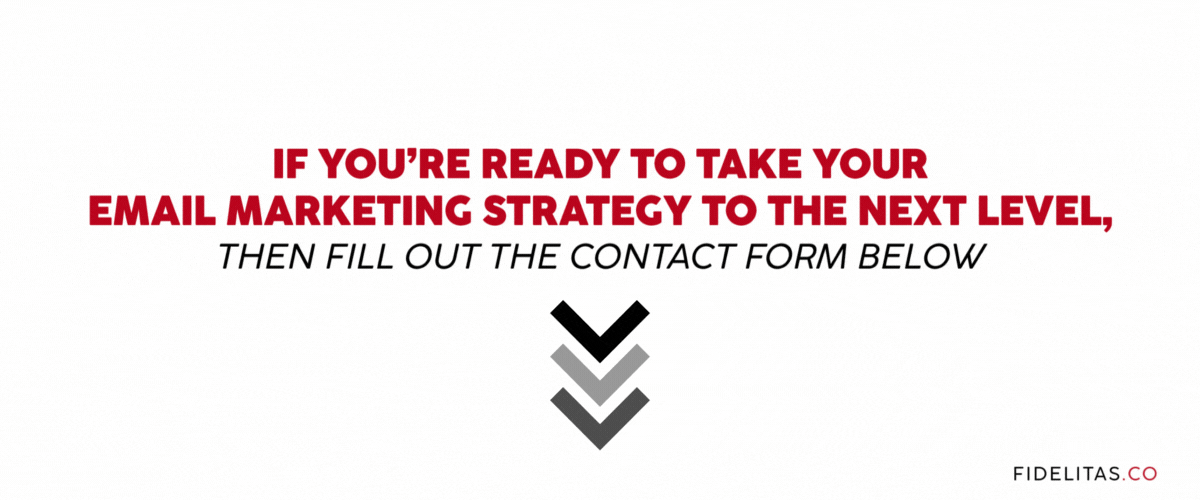
Supercharge Your Retention Marketing Strategy With SMS
The SMS segment of email marketing has grown exponentially over the past several years, and it isn’t showing any signs of slowing down. Getting in soon is going to provide you with a competitive edge over your competitors. Because while they’re still trying to figure out what works and what doesn’t, you’ll have an ironed-out strategy that drives continuous growth.
If you’re ready to take your email marketing strategy to the next level, then fill out the contact form below. The
Fidelitas team has years of experience leading email marketing initiatives, and we’re ready to help you create an SMS and email marketing strategy that outperforms your competition.
PGRpdiBjbGFzcz0ia2xhdml5by1mb3JtLVY1U0ZZOCI+PC9kaXY+
